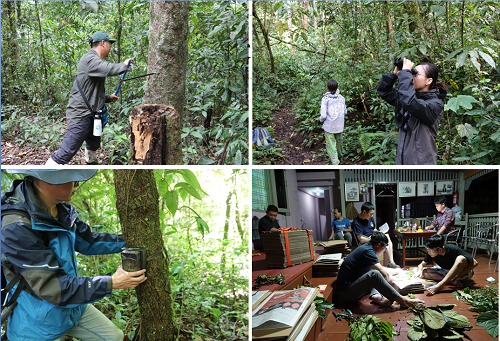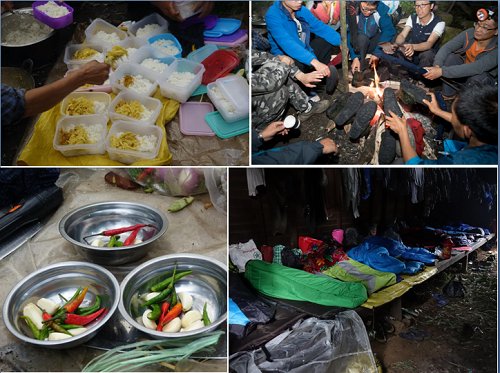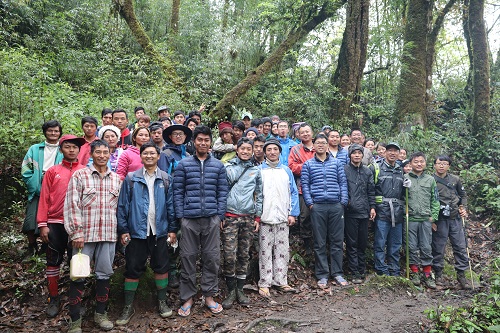A large-scale biodiversity survey in central and north Myanmar has been recently accomplished by the Southeast Asia Biodiversity Research Institute, Chinese Academy of Sciences (CAS-SEABRI) in May. 25 field researchers from Xishuangbanna Tropical Botanical Garden (XTBG), Institute of Botany, Institute of Zoology, and Myanmar partner institutions accomplished the tough work.
The field researchers mainly collected research materials of plants in families of Lauraceae, Zingiberaceae, Leguminosae, Rubiaceae, Cucurbitaceae, Dryopteridaceae, Guttiferae, Gesneriaceae, and Orchidaceae.
They also observed diversity of bird species at different altitudes, collected animal specimens such as invertebrates (e.g. Gammaridae and spiders), and photos by 30infrared thermal cameras.
A large amount of primary data concerning Myanmar animal and plant diversity was collected.
It seemed that a new record of Triuridaceae, a new orchid genus, and about 9-12new species, and 9 new record genus in Myanmar have been possibly collected in the large-scale science exploration.
Myanmar is a globally recognized biodiversity hotspot and it supports a very high number of species. However, biodiversity is under serious threat as a result of human activities. During the investigation, researchers encountered five slash and burn agriculture activities, which destroyed large patches of primary forests.
Up to now, there is not a complete scientific inventory of plants and animals in Myanmar. In response to the urgency of protecting plant and animal diversity in Myanmar, and serve “the Belt and Road strategy”, the CAS-SEABRI is trying to study and sustain biodiversity in Myanmar.
CAS-SEABRI is collaborating with other institutes across the CAS to leverage expertise and resources in biodiversity research. It also strives to increase science and conservation capacity of Myanmar partner organizations to ensure long-term survival of species and ecosystems in Myanmar.
Collaborating with Myanmar’s Ministry of Natural Resources and Environmental Conservation, this is the fifth large research trip since 2014 headed by XTBG. It is an important part of the work by CAS-SEABRI. Prof. Quan Ruichang headed up the field survey team.

Slash and burn agriculture practice


Field work is really tough.

Field work is really tough.

Filed workers pose a group photo.





